Shopping Cart
Remove All Your shopping cart is currently empty
Your shopping cart is currently empty
Anti-CHGA Antibody (5H899) is a Mouse antibody targeting CHGA. Anti-CHGA Antibody (5H899) can be used in ICC,IHC,WB.
| Pack Size | Price | USA Warehouse | Global Warehouse | Quantity |
|---|---|---|---|---|
| 50 μL | $298 | 7-10 days | 7-10 days | |
| 100 μL | $426 | 7-10 days | 7-10 days |
| Description | Anti-CHGA Antibody (5H899) is a Mouse antibody targeting CHGA. Anti-CHGA Antibody (5H899) can be used in ICC,IHC,WB. |
| Clone | 5H899 |
| Reactivity | Human,Mouse,Rat |
| Verified Activity | 1. Western blot analysis of Chromogranin A on PC-12 using anti-Chromogranin A antibody at 1/500 dilution. 2. Immunohistochemical analysis of paraffin-embedded rat small intestine tissue using anti-Chromogranin A antibody. Counter stained with hematoxylin. 3. Immunohistochemical analysis of paraffin-embedded rat pancreas tissue using anti-Chromogranin A antibody. Counter stained with hematoxylin. 4. Immunohistochemical analysis of paraffin-embedded mouse pancreas tissue using anti-Chromogranin A antibody. Counter stained with hematoxylin. 5. ICC staining Chromogranin A(red) in Hela cells. The nuclear counter stain is DAPI(blue). Cells were fixed in paraformaldehyde, permeabilised with 0.25% Triton X100/PBS. 6. ICC staining Chromogranin A(red) in LOVO cells. Cells were fixed in paraformaldehyde, permeabilised with 0.25% Triton X100/PBS. 7. ICC staining Chromogranin A(red) in PANC-1 cells. Cells were fixed in paraformaldehyde, permeabilised with 0.25% Triton X100/PBS. 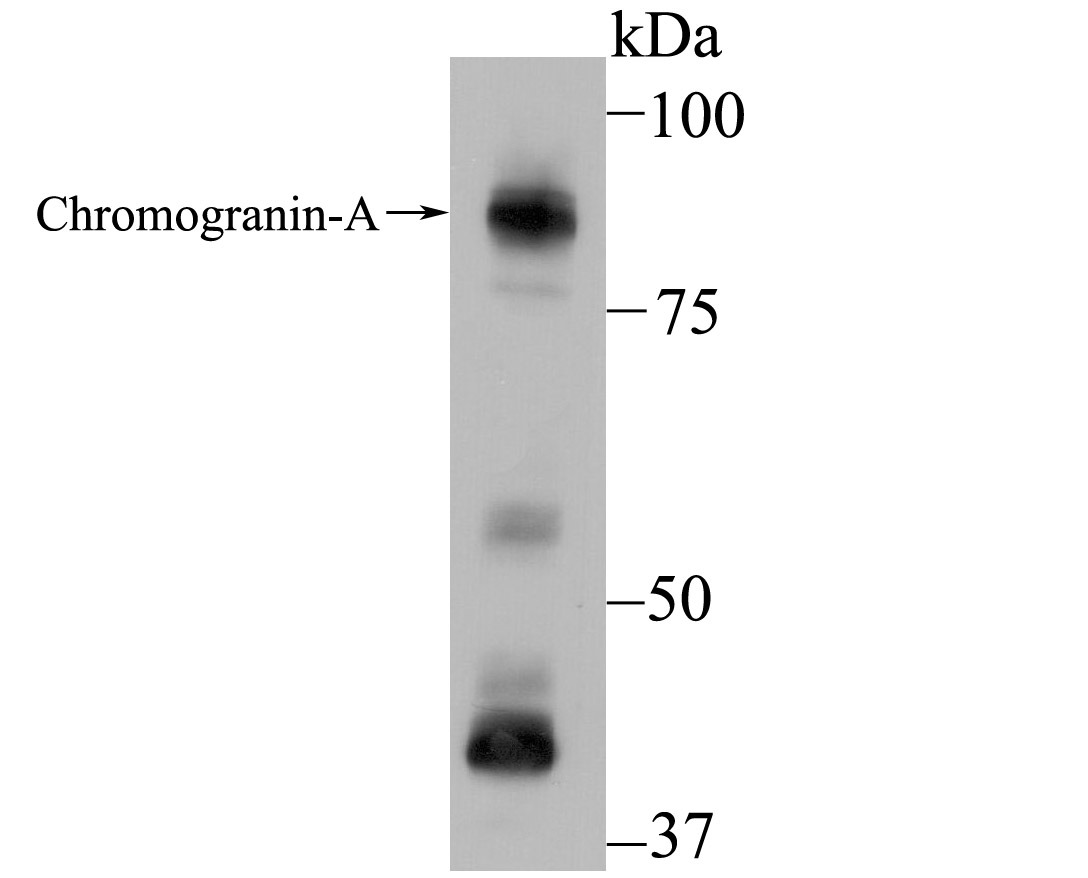 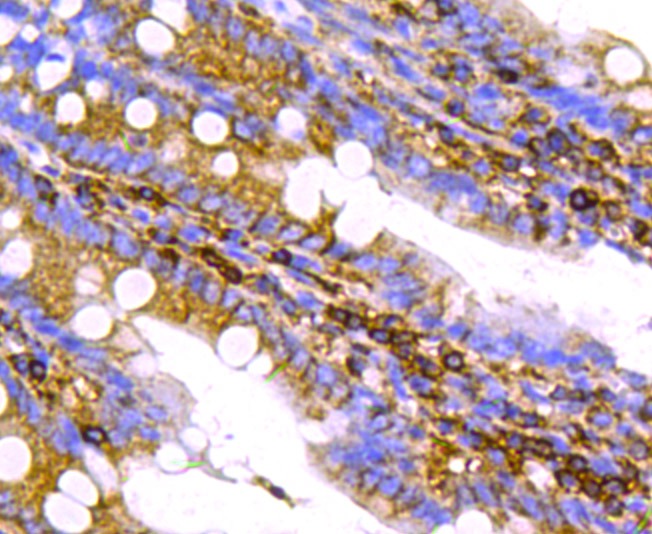 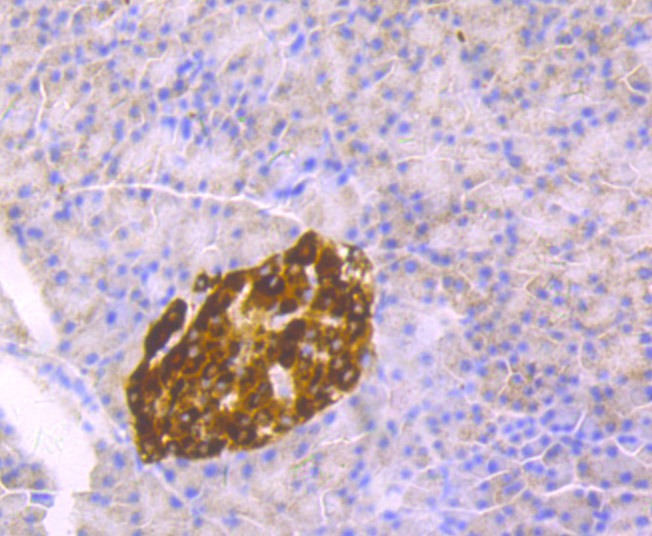 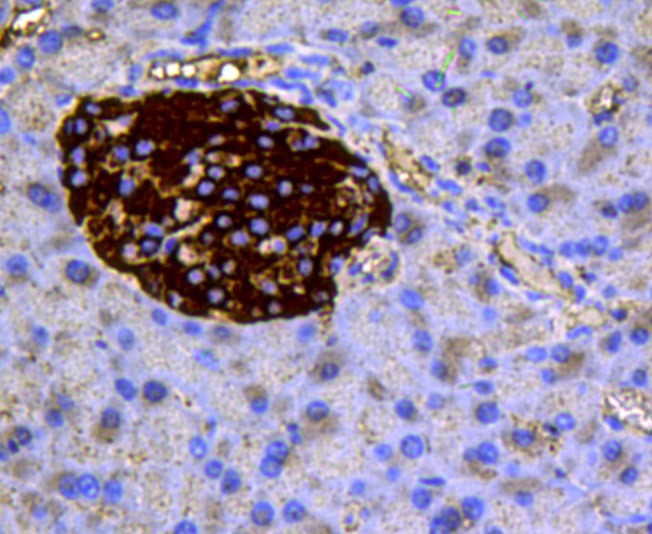 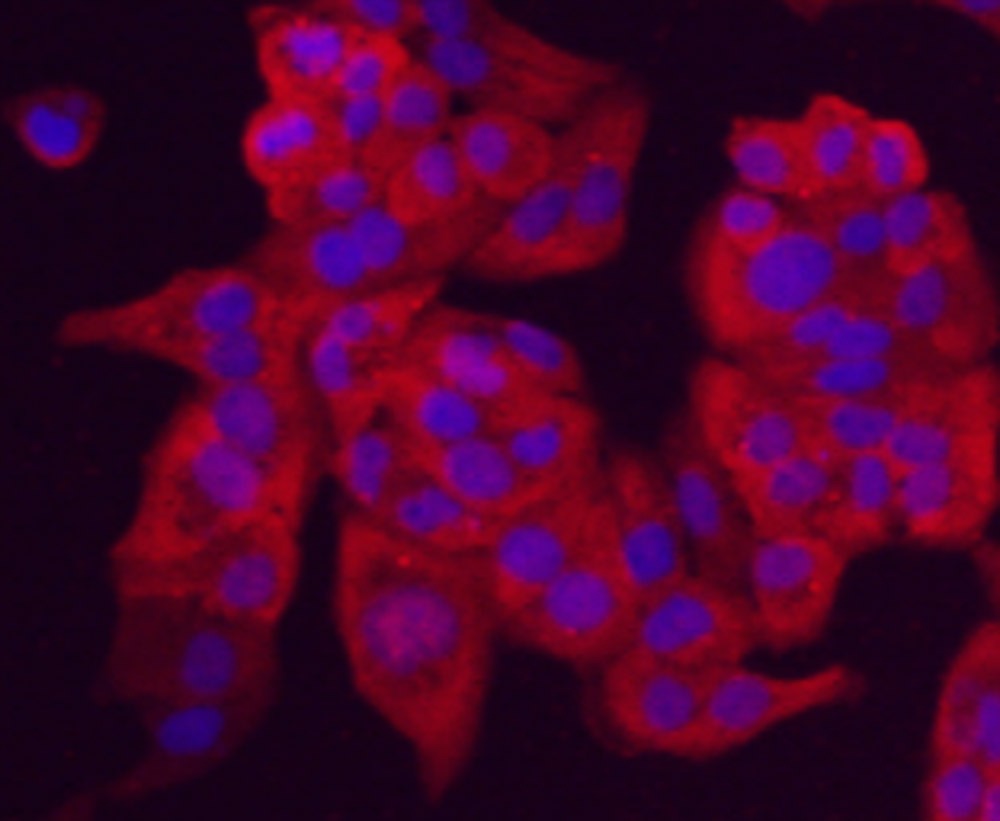 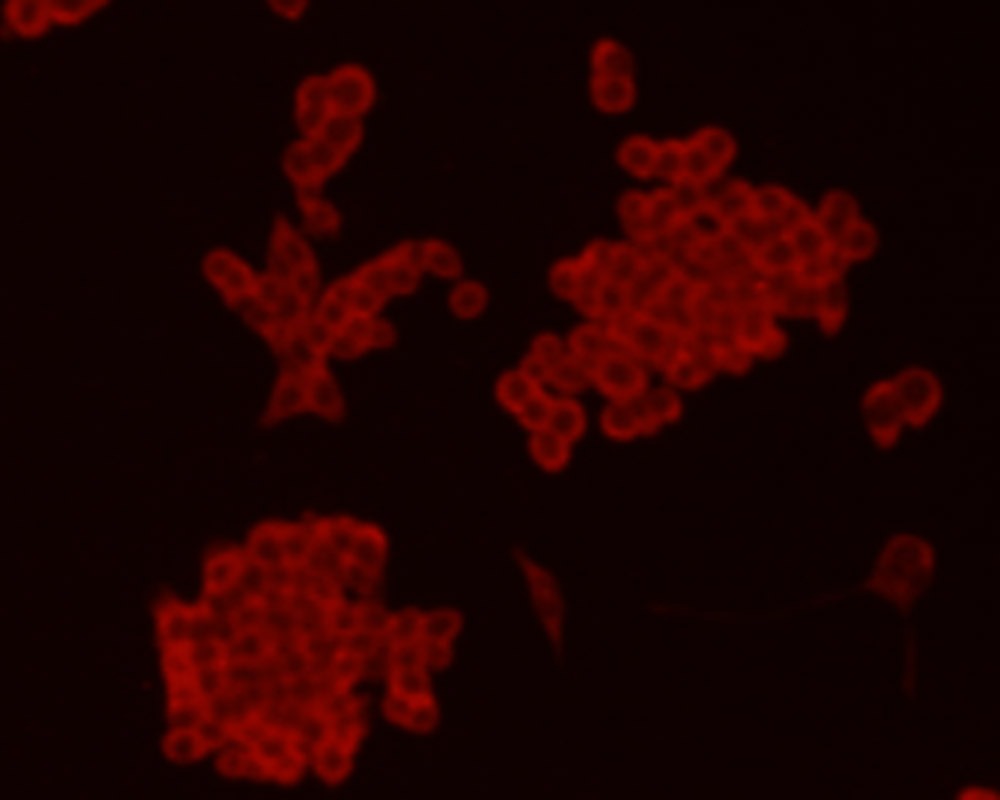 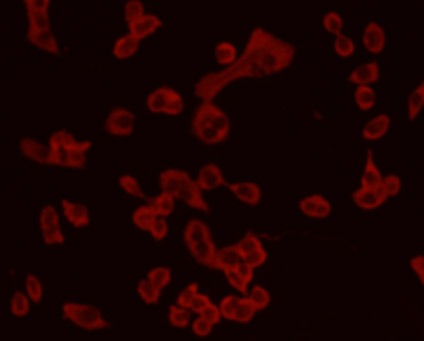 |
| Application | |
| Recommended Dose | WB: 1:500; IHC: 1:50-200; ICC: 1:50-200 |
| Antibody Type | Monoclonal |
| Host Species | Mouse |
| Construction | Hybridoma Monoclonal Antibody |
| Purification | ProA affinity purified |
| Appearance | Liquid |
| Formulation | 1*TBS (pH7.4), 0.5%BSA, 50%Glycerol. Preservative: 0.05% Sodium Azide. |
| Research Background | Chromogranins (secretogranins) are acidic glycoproteins that localize within secretory granules of endocrine, neuroendocrine and neuronal tissue. Family members include chromogranin A (Chr-A), chromogranin B (Chr-B, also known as secretogranin I) chromogranin C (also known as secretogranin II or Sg II), secretogranin III (Sg III or SCG3). High levels of Chr-A expression is a characteristic of neuroendocrine tumors. Pancreastatin is a peptide derived from Chr-A which inhibits insulin secretion, exocrine pancreatic secretion and gastric acid secretion. Pancreastatin exists as two forms; the major form is expressed in stomach and colon extracts. In neuroendocrine cells the level Sg II has been shown to increase four-fold in response to histamine, while levels of Chr-A and Chr-B showed little or no increase. Sg III is an acidic secretory protein expressed in neuronal and endocrine cells. In the anterior lobe of the rat pituitary gland, Sg III is present in mammotropes and thyrotropes, moderately in gonadotropes and corticotropes, though not in somatotropes. Sg III and carboxypeptidase E (CPE) bind specifically to cholesterol-rich secretory granule (SG) membranes. |
| Conjucates | Unconjugated |
| Immunogen | Peptide |
| Uniprot ID |
| Molecular Weight | Theoretical: 86 kDa. |
| Stability & Storage | Store at -20°C or -80°C for 12 months. Avoid repeated freeze-thaw cycles. |
| Transport | Shipping with blue ice. |
| Size | Quantity | Unit Price | Amount | Operation |
|---|

Copyright © 2015-2025 TargetMol Chemicals Inc. All Rights Reserved.